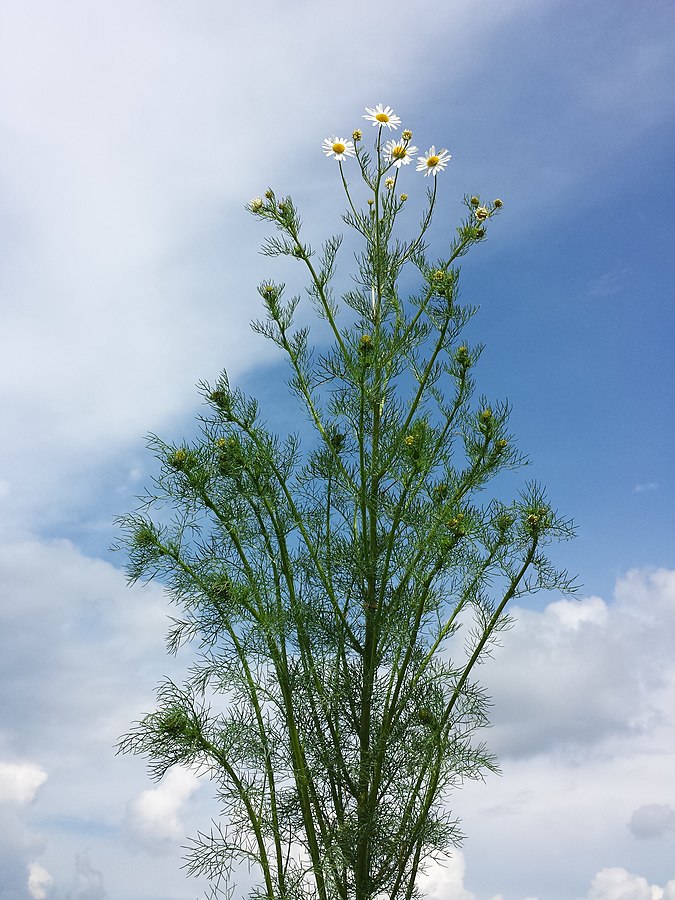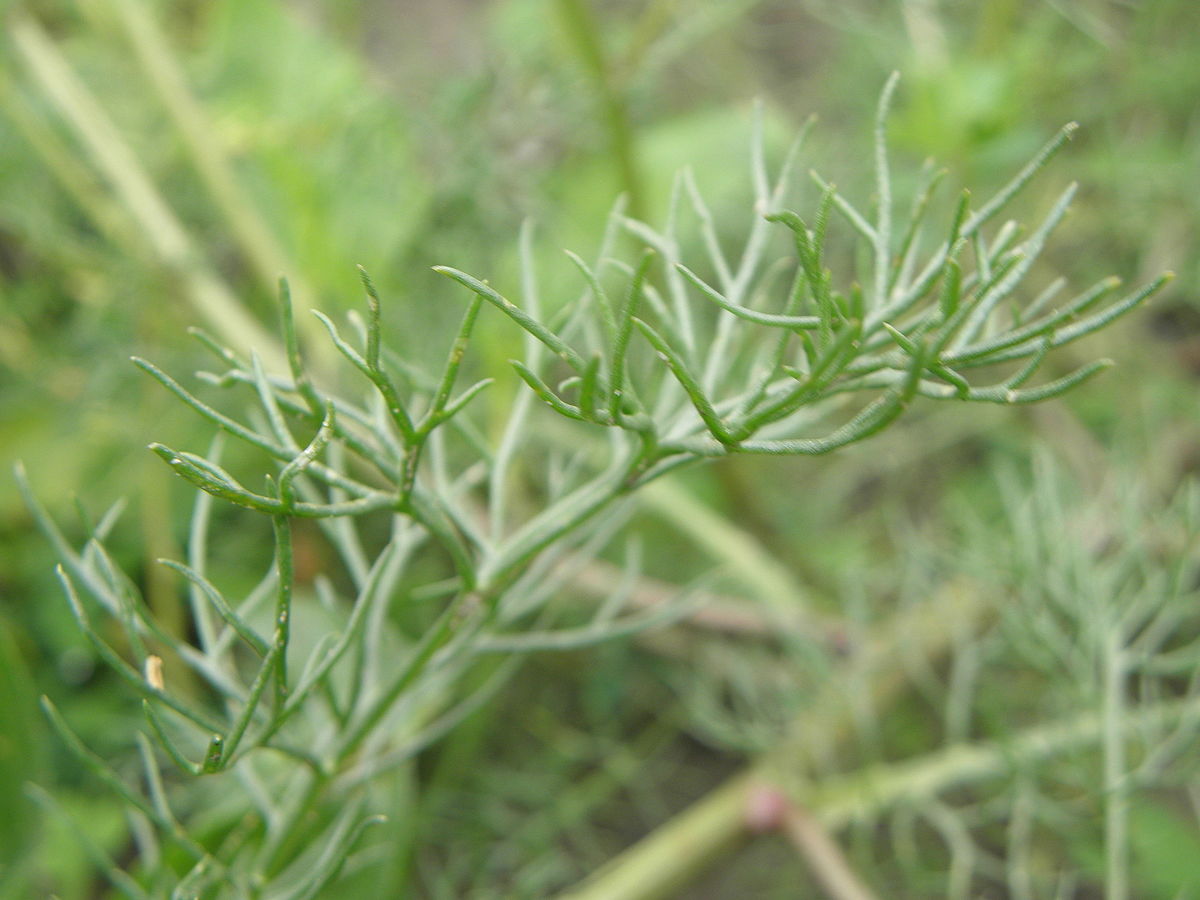Scentless Chamomile

Scentless Chamomile
(Tripleurospermum inodorum)
Priority: - Established / Strategic Control
Tags: Agricultural | Terrestrial | Biocontrol
Identification and Reproduction
Identification:
- Scentless chamomile, also known as mayweed, is an annual or short-lived perennial plant.
- Stems are erect, branching, green and range from 20 to 80 cm tall.
- Leaves are alternate, pinnately lobed, narrow and sharp-pointed. Leaves appear feathery and have branching lobes.
- Daisy flowers are found at the end of stems. Ray flower petals are white and 10-25 petals will attach to the yellow centre disc. Yellow button centre will become more dome like with maturity. Overtime the ray leaves will droop and then wilt away.
Reproduction:
- This plant reproduces by seed.
- Dense patches of scentless chamomile can produce up to 1.8 million seeds per square meter.
- Seeds can remain viable in the soil for 15 years.
Habitat & Ecology
- Common in fallow fields, wastelands, newly sown lawns, roadsides, potato fields, vegetable patches and seldomly hay fields.
- Prefers sites with a high moisture level and is often near ponds, streams and other ares that are seasonally flooded.
- It is found throughout BC, but is a problem specifically in the Kootenay, Okanagan, Peace River and Thompson region.
Impacts
Social:
- Seeds contaminate hay cultivation.
- It is unpalatable to livestock.
- Its presence will reduce crop and pasture harvests.
Ecological:
- Can form monocultures near waterbodies or riparian areas, altering the hydrological systems.
Management
Mechanical/Manual Control:
- Mowing prior to flower formation and seedset can help reduce seed production.
- Continuous shallow tillage can be effective in controlling new establishing seedlings.
- Small infestations can easily be hand pulled before seedset.
- Monitor and remove any regrowth throughout the growing season.
- Dispose of plant material in the landfill.
Biological Control:
- Several biological control agents have been released in northeastern BC to manage scentless chamomile.
Chemical Control:
- Herbicide should be applied early in the growing season prior to flower production. If this is not possible herbicides are still effective when plants are green and growing.
- Registered herbicides include picloram, aminopyralid, metsulfuron methyl, dicamba, 2,4-D and MCPP.
- Always read and follow the chemical product label prior to use.
Resources
Download A Guide to Weeds in British Columbia for Scentless Chamomile here.
Header photo (Hanna Zelenko).




